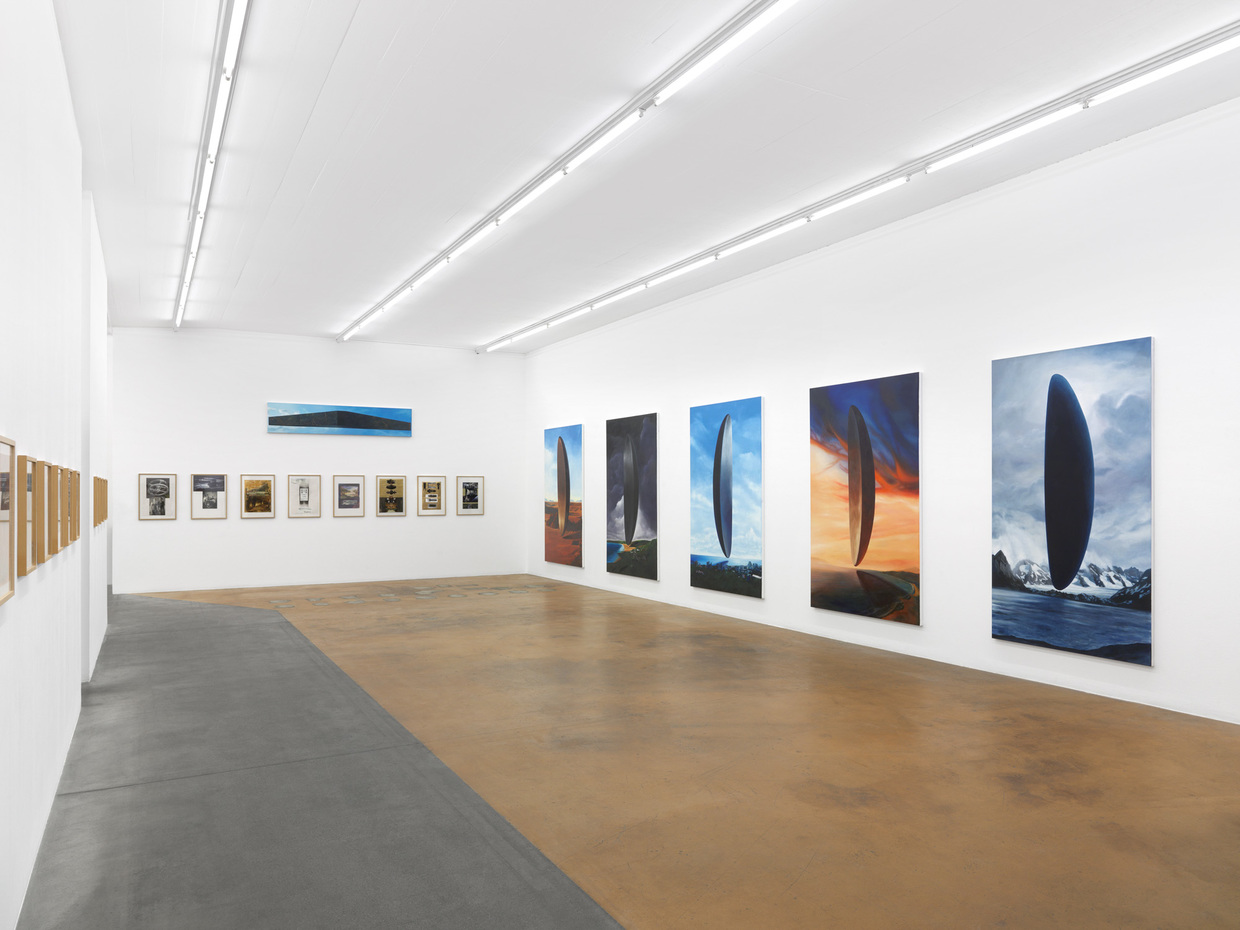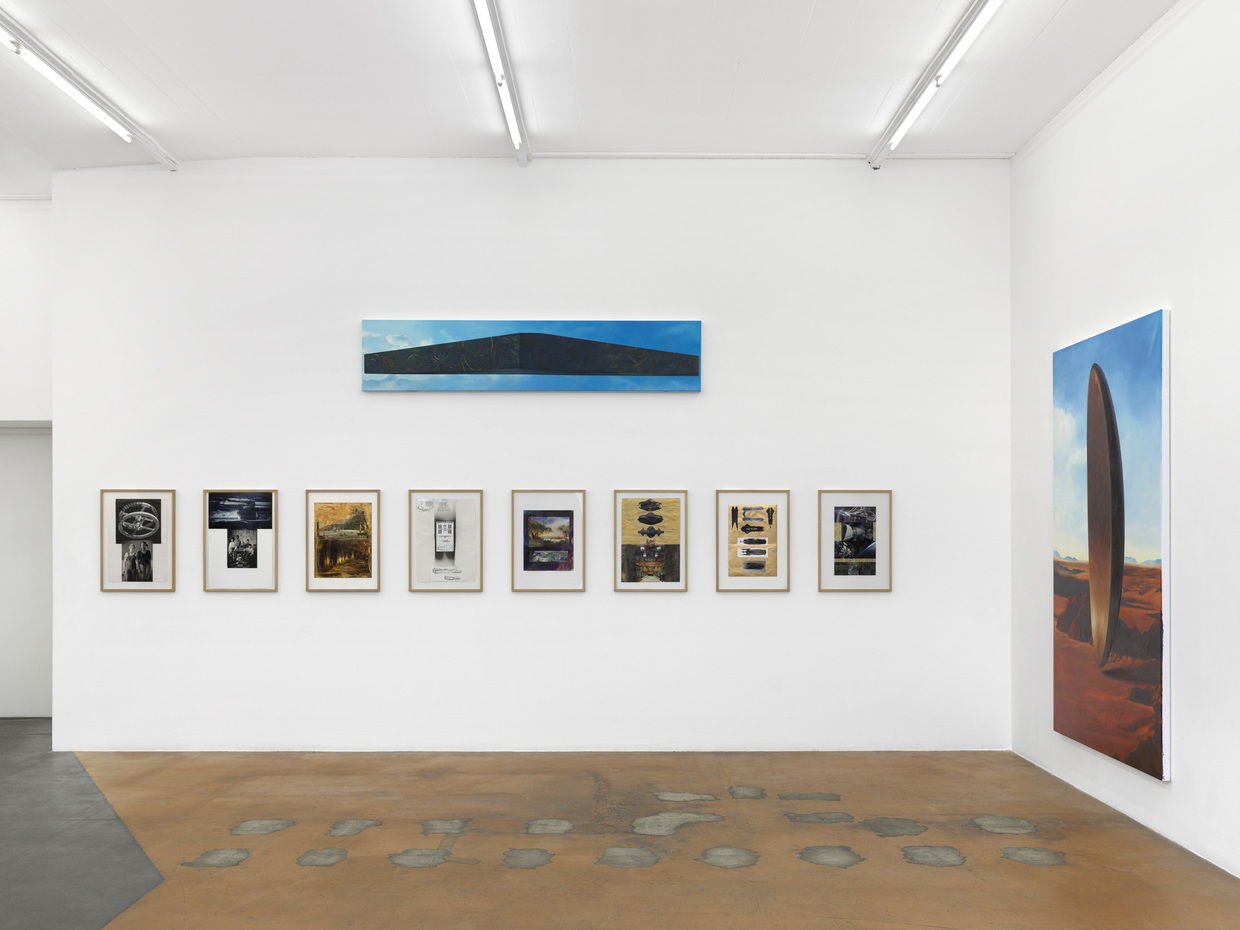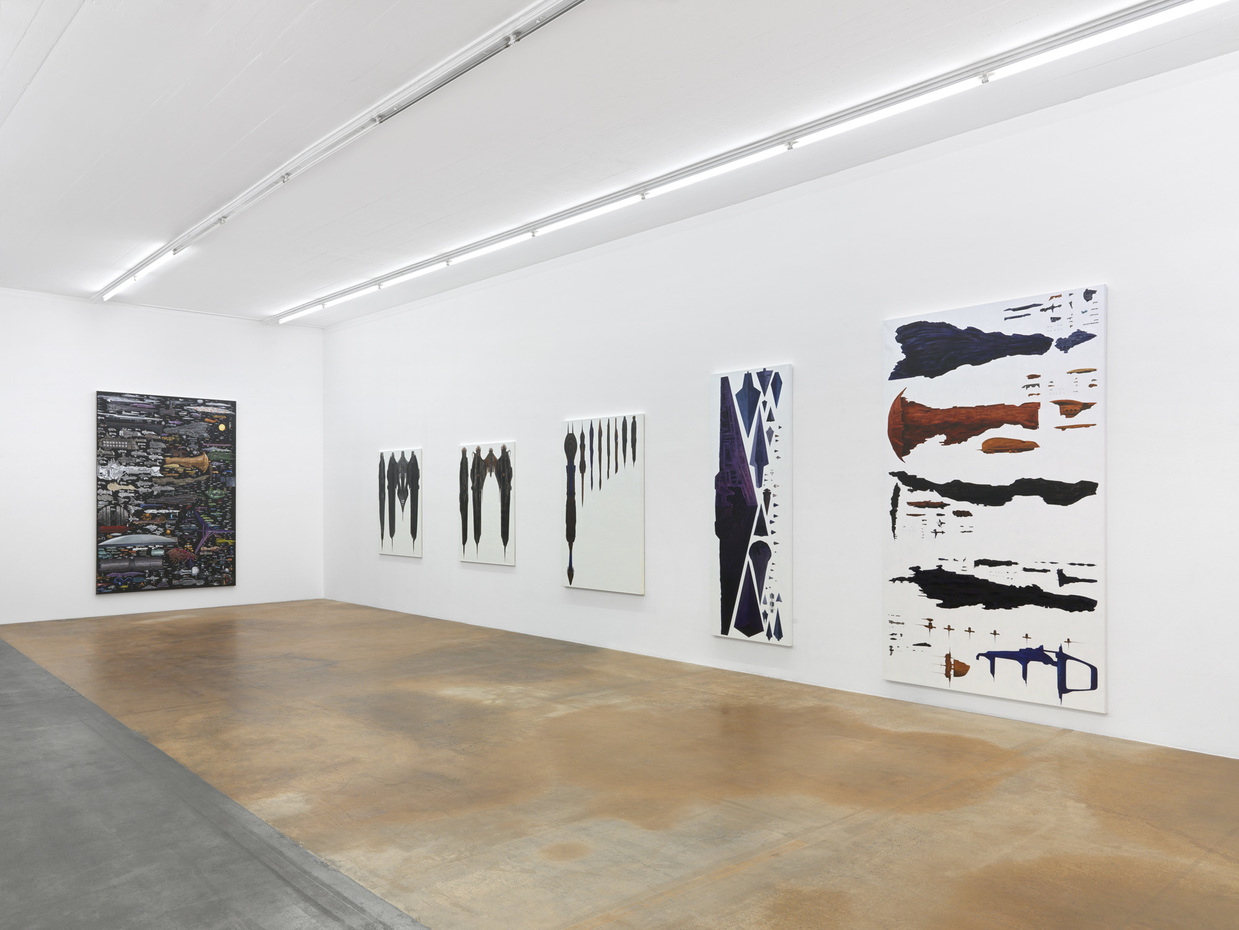“In recent tales of science fiction, large-scale objects silently hover above cities or in earth’s orbit.” These are the opening lines of Objects in the Sky, a 2019 essay in which artist Mathis Gasser seeks to connect the recurring appearance of these objects with the financial crisis of 2007–2008. He argues that “objects in the sky” constitute fictional depictions—in art and culture—of “incomprehensible abstract capital accumulation,” exploring the forms of these objects through three metaphors for the production of economic value: the womb, the bubble, and the tumor. His essay was the basis for the exhibition hosted at MAMCO this summer, which focuses specifically on these celestial objects and their place in Gasser’s work.
The exhibition was also built around classification and naturalistic taxonomy. This formal principle is evident in the artist’s 2017 work Inhabitants (after Dirk Loechel), a large-scale painting inspired by Loechel’s sci-fi spaceship size comparison chart (which was widely circulated online in 2015). The exhibition featured a series of new classification-style paintings in the style of Inhabitants, suggesting parallels between his practice and the work of the appropriationists. Images from cinema, science fiction, TV series, Conceptual art, video games, posters, and NASA and ESA communications form the raw material for Gasser’s paintings. Some he reproduces unaltered, while others he recomposes. Gasser can therefore be regarded as a “conceptual painter”: like Allen Ruppersberg, he archives and reworks Pop images, serving as a naturalistic chronicler of popular culture.
For his collages, Gasser takes more liberties with his sources, suggesting alternative interpretations of his practice. By combining images from documentaries and fiction and intermingling “objects in the sky” with ships, architectural elements, and historical landscapes, he approaches the notion of space conquest from the perspective of postcolonial studies. Is space exploration a rerun of the colonial era? To what extent can the “alien” invader be understood through the lens of current neoliberal migration policy, the history of globalization, and international political institutions?
- Exhibition curated by Jill Gasparina




